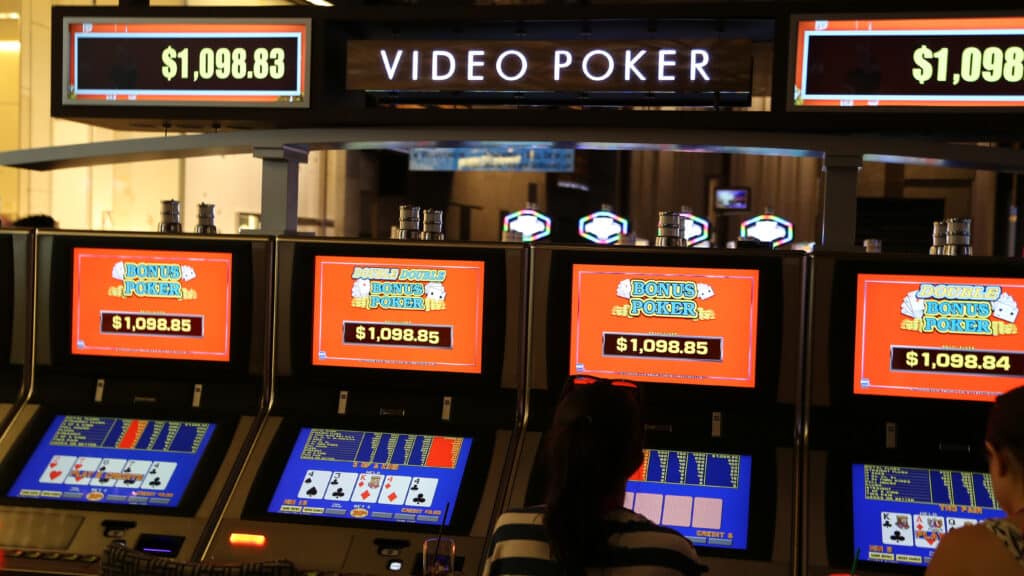Video poker has long been a staple in both land-based and online casinos, attracting millions of players with its mix of simplicity, excitement, and the opportunity for strategic play. Unlike traditional poker games, which are typically played against other players, video poker offers a solitary experience where you compete against the machine. Understanding the history of video poker not only enriches your appreciation of the game but also provides insight into its evolution and how it became a beloved casino classic. In this comprehensive guide, we will explore the origins, key developments, and some fun facts surrounding video poker.
The Origins of Poker
The game of poker itself has a deep history, with roots that can be traced back to several card games played in Europe and Asia during the 15th and 16th centuries. Early versions of poker were played in France, where a game called "poque" involved betting and card combinations that resemble the poker hands we use today. By the 17th century, the game had spread to England and the Americas, eventually taking shape into the version of poker we recognize today.
By the early 1900s, poker had firmly established itself as a popular casino game, both in private homes and in public gambling halls. Its popularity in the U.S. soared with the advent of the Wild West, as poker tables became common in saloons. The game continued to evolve, with new variations such as Texas Hold'em gaining widespread appeal. But while poker thrived in the traditional card room, the invention of video poker would provide an entirely new dimension to the game.
Introduction of Video Poker Machines
The First Video Poker Machine
Video poker machines, as we know them today, were introduced in the 1970s. The creation of the first video poker machine is credited to a man named Si Redd, an engineer and casino innovator. Redd worked for International Game Technology (IGT), a company that would later dominate the video poker market. He recognized the potential for a slot machine that incorporated the game of poker, and thus, the first video poker machine was born: the "Poker-Matic" in 1970.
The Poker-Matic used a basic video screen to display five cards and allowed players to select which cards to hold or discard, mimicking the decision-making process in traditional poker. Players could then "draw" new cards to try to complete winning hands. This concept was revolutionary at the time because it combined the appeal of poker with the fast-paced nature of slot machines, allowing players to enjoy a solitary poker game while still having the thrill of a slot machine’s payout potential.
Growth and Evolution in the 1980s
Throughout the 1980s, video poker machines grew in popularity, especially in casinos across Las Vegas and Atlantic City. Video poker started to gain significant traction as it offered players the chance to play poker at their own pace, without needing to find other players or wait for a dealer. The initial models were fairly basic, offering just a few game types, such as "Jacks or Better," but innovations continued to push the boundaries.
By the mid-1980s, video poker machines featured more sophisticated software that allowed for greater variability in game types, adding hands like "Deuces Wild" and "Joker Poker." These changes helped keep the game fresh and appealing, as players now had a variety of game formats to explore. The addition of progressive jackpots also contributed to the machine’s popularity, offering larger payouts for players who hit certain rare hands, like a Royal Flush.
The Rise of Online Video Poker
Early Days of Online Gambling
The rise of the internet in the 1990s ushered in a new era for video poker. Online casinos began to emerge, providing players with a way to enjoy video poker and other casino games from the comfort of their own homes. The first online casino, which offered video poker, opened its virtual doors in 1994. This was a pivotal moment in the history of gambling, as it expanded the accessibility of video poker far beyond physical casinos.
Online platforms allowed for new game innovations and the creation of a wide range of video poker variants. As the internet continued to grow, so did the popularity of online gambling. This period marked the beginning of video poker’s global appeal, as players from all over the world could now compete against a machine and enjoy various poker games without ever leaving their homes.
Technological Advancements in the 2000s
The early 2000s saw major advancements in online video poker, with the introduction of improved graphics, smoother gameplay, and enhanced user interfaces. Players could now enjoy a much more immersive experience, with online casinos offering higher-quality versions of classic video poker games like "Jacks or Better" and "Deuces Wild," as well as unique variations that could only be found on the internet.
In addition to technological improvements, online video poker platforms began to integrate more interactive features, including multiplayer poker tournaments and the ability to track player progress over time. These changes allowed video poker to not only retain its appeal to casual players but also attract more serious poker enthusiasts looking for a challenge.
Key Developments in the Modern Era
Mobile Video Poker
The advent of smartphones and tablets in the 2010s had a significant impact on the video poker industry. Casino developers quickly adapted to this new form of gaming by creating mobile-friendly versions of their video poker machines. Today, players can enjoy video poker games on virtually any device, including iPhones, Android phones, and tablets, with the same high-quality graphics and smooth gameplay found on desktop platforms.
Mobile video poker allows players to enjoy their favorite poker games anywhere and anytime, further boosting the accessibility of the game. Many online casinos have even developed dedicated mobile apps for a seamless gaming experience, enabling players to deposit, withdraw, and play video poker on the go.
Innovative Variations and New Formats
In recent years, we’ve seen the introduction of innovative video poker formats and variations that keep the game fresh and exciting. For instance, many online casinos offer "multi-hand" video poker, which allows players to play several hands simultaneously, increasing both the action and the potential for big wins. Other new formats include video poker with dynamic paylines, where the payout structure changes with each hand, and games that incorporate real-time multiplayer elements, allowing for a competitive aspect even in a solitary game.
These innovations not only maintain player interest but also ensure that video poker continues to be a competitive option in the crowded world of online casino games.
Fun Facts About Video Poker
- Video poker machines are often considered one of the best games for players due to their low house edge. If played optimally, games like Jacks or Better can have a house edge as low as 0.46%.
- The "Royal Flush" hand, which is the highest possible hand in video poker, is notoriously difficult to achieve, with odds of around 1 in 40,000 to hit a Royal Flush in most variations.
- Video poker has inspired a number of books and even academic studies, with mathematicians and strategists often analyzing the optimal strategies for different variants.
- The very first video poker machine, Poker-Matic, was sold to casinos for only $500 in 1970, compared to the thousands of dollars a modern video poker machine can cost today.
The Future of Video Poker
As technology continues to evolve, it’s clear that video poker will continue to grow in both popularity and innovation. We can expect further enhancements in gameplay, graphics, and the introduction of new game variants. Virtual reality (VR) casinos and the integration of augmented reality (AR) could even bring a new dimension to video poker, offering players a more immersive and interactive experience.
Moreover, as online and mobile gambling becomes even more integrated into daily life, video poker is likely to remain a cornerstone of the online casino industry. With the game’s rich history, accessibility, and ever-evolving gameplay, there’s no telling where the future of video poker will take us.
Conclusion
From its humble beginnings in the early 1970s to its current status as a global online casino favorite, the history of video poker is a testament to its enduring appeal. Whether you’re a casual player or an experienced strategist, the game continues to offer an exciting blend of skill, luck, and strategy. As the technology continues to evolve, video poker is sure to remain a key part of the casino landscape, offering new experiences for players around the world. So, the next time you sit down at a video poker machine, remember that you’re part of a rich history that’s been evolving for over 50 years.



